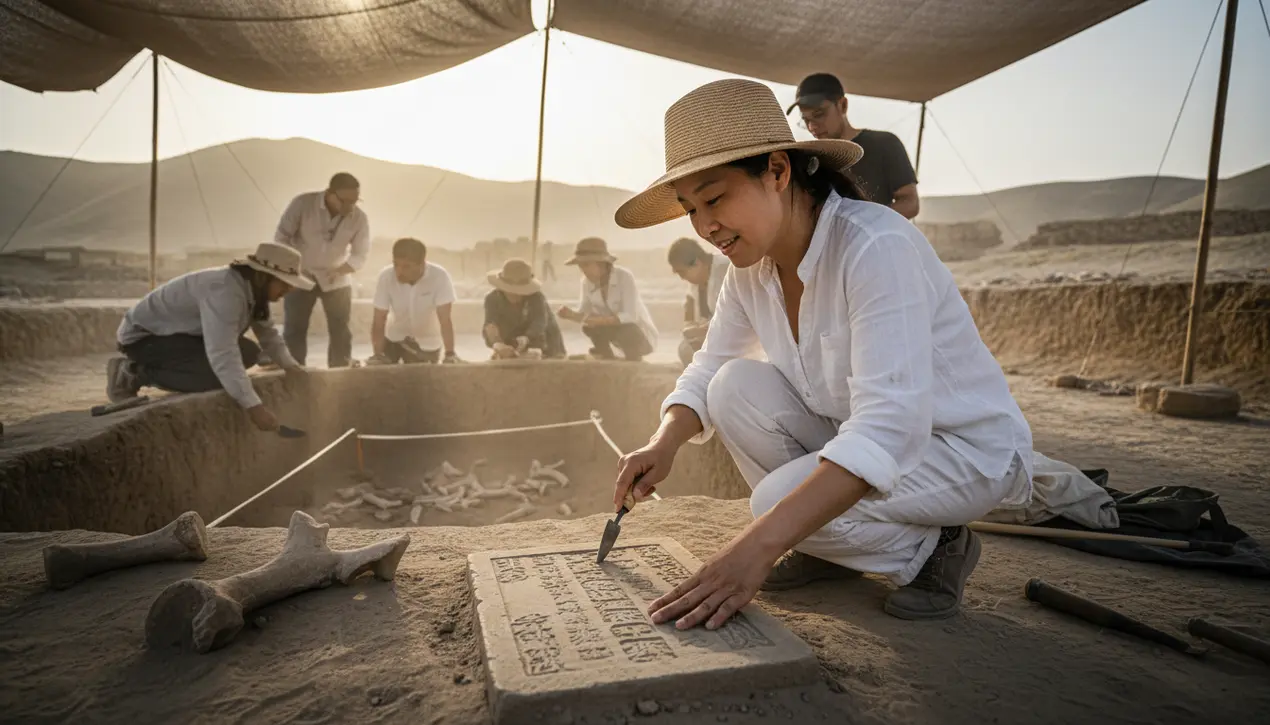
SciencearchaeologyAncient Civilizations
Science Clears Ancient Chinese Queen Bao Si's Name
RA
Rachel Adams
1 week ago7 min read2 comments
For nearly three millennia, the historical narrative surrounding Bao Si has been one of simplistic condemnation, casting the ancient Chinese queen as the archetypal femme fatale whose unparalleled beauty and alleged emotional coldness precipitated the collapse of the Western Zhou Dynasty. This enduring legend, which claims a king lit sacred beacon fires in a desperate, deceitful ploy to coax a smile from his aloof queen, has long served as a cautionary tale about the destructive power of feminine wiles.However, modern scientific and historiographical methods are now meticulously clearing her name, challenging a legacy built more on patriarchal moralizing than on factual evidence. The traditional account, largely propagated by later Confucian scholars who held a vested interest in promoting specific models of virtuous womanhood, paints a picture of a woman so detached that her refusal to smile justified an act of catastrophic state deception.Yet, when we apply the rigorous, evidence-based lens of contemporary historical ecology and critical source analysis, a far more nuanced and plausible scenario emerges. It is highly probable that Bao Si was a complex individual navigating the treacherous political waters of a court in decline, a figure whose actions have been misinterpreted and whose agency has been systematically erased to fit a convenient narrative of dynastic failure.The very notion that a single woman's demeanor could topple a centuries-old dynasty is an ecological oversimplification; it ignores the complex interplay of environmental stressors, such as documented climate shifts affecting agricultural yields, rampant political corruption, and significant military failures that were the true root causes of the Zhou's fragmentation. Just as we now understand that an ecosystem's collapse is never due to a single species but a cascade of interconnected failures, so too must we view the fall of the Zhou.Recent archaeological findings and critical re-readings of bamboo annals suggest that the infamous beacon fire story is likely apocryphal, a literary device invented generations after the fact to assign a singular, morally satisfying cause to a complex historical event. By exonerating Bao Si, science and modern historiography are not merely correcting a historical record; they are performing an act of restorative justice, challenging us to question the other 'inconvenient' women whose stories have been weaponized against them.This reevaluation forces a broader conversation about how we assign blame in history and the enduring tendency to scapegoat women for systemic failures created by men. The case of Queen Bao Si stands as a powerful testament to the importance of applying a multidisciplinary, evidence-driven approach to our past, ensuring that the shadows of myth do not forever obscure the complex truths of human history.
#archaeology
#ancient China
#Bao Si
#historical revision
#featured
#Western Zhou Dynasty
#femme fatale
#scientific evidence
Stay Informed. Act Smarter.
Get weekly highlights, major headlines, and expert insights — then put your knowledge to work in our live prediction markets.
Related News
Comments
Loading comments...
© 2025 Outpoll Service LTD. All rights reserved.